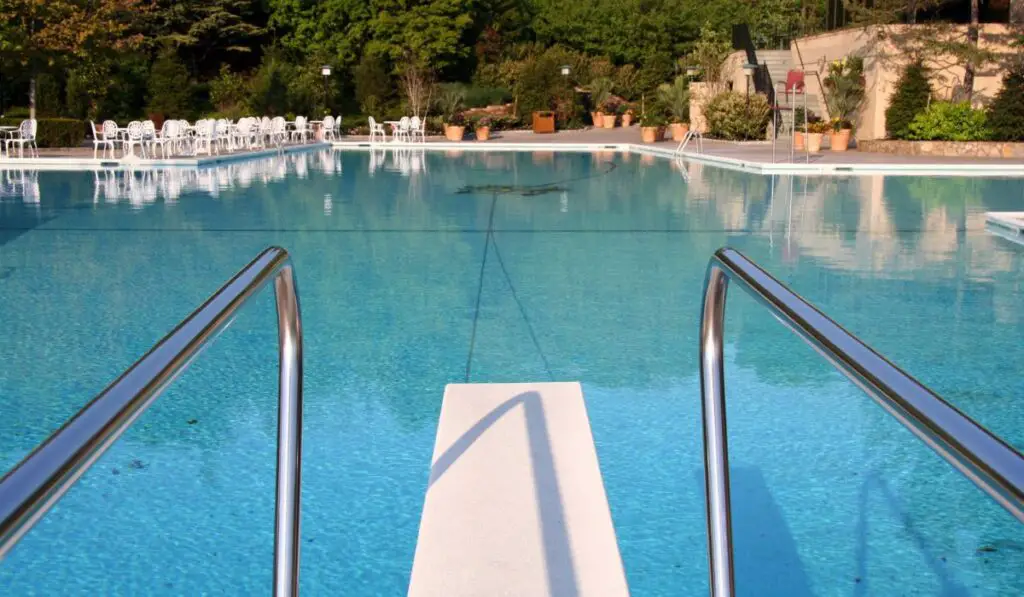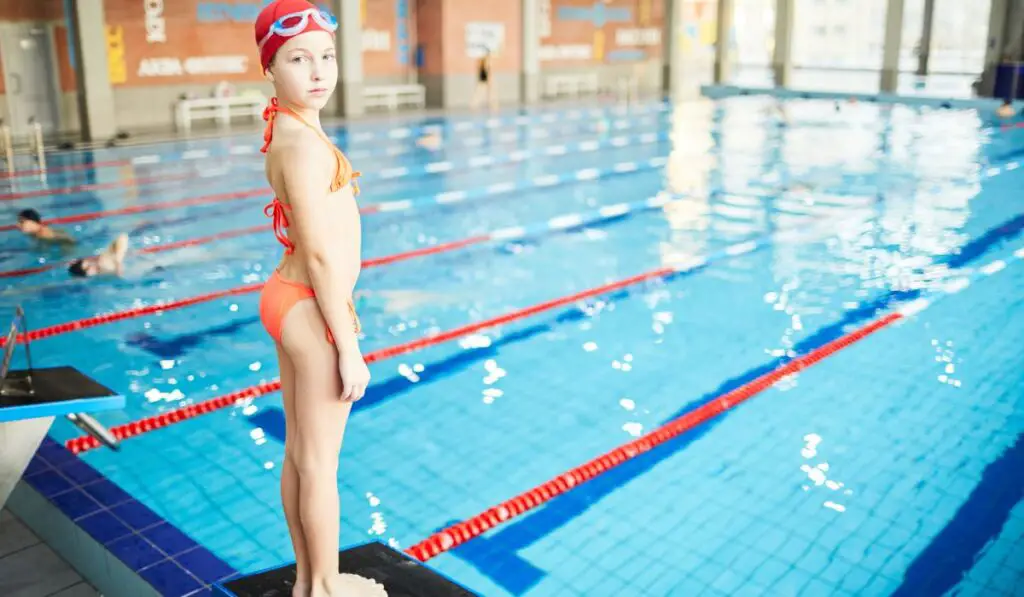Leaping from a high diving board can be an exhilarating experience for both the diver and anyone watching from the sidelines. But before you take the plunge yourself, you should know a few things about high diving and high diving boards.
High diving boards range in height from 3 to 10 meters (about 10 to 33 feet), which is roughly the height of a three-story building. Most high diving boards are rigid platforms made from fiberglass or aluminum coated with a non-slip material. Springboards are also used for lower platforms.
Jumping from such great heights means landing at more than twice the speed of gravity. That’s why it’s important to land properly in the water, and a proper dive starts from up on the board. Let’s look at what’s different about high diving boards and how they affect your dive.
What Is High Diving?

High diving is a type of competitive diving that involves jumping or diving from a considerable height. The height of the diving board can range widely. In the Olympics, it’s 10 meters. However, in other championships, you can find boards at a whopping 27 meters!
High diving is a very technical and dangerous sport that requires years of training and practice. A high diver can reach speeds of up to 60 kilometers per hour and hit the water with a force of up to 5 times their body weight, which means a serious risk of injury if it’s not done correctly.
That’s why high divers need to have excellent swimming skills and mental strength to perform the dives successfully.
High diving is done from fixed and flexible diving boards, and competitions are held indoors and outdoors. Outdoor high dives are often found at natural water bodies or artificial pools specifically designed for this purpose.
Indoor high diving competitions are held in purpose-built pools with moveable floors. This allows the pool to accommodate divers of different heights and skill levels.
How High Are High Dive Boards?
The height of the diving board depends on the type of competition or event. In Olympic competitions, the platform is 10 meters (33 feet) high for both men and women. But in other events, the platform can be a lot higher.
For example, in the World Aquatic Championship, men dive from a platform that’s 27 meters (89 feet) high, while women dive from one that’s 20 meters (66 feet) high. The other most popular form of high diving is cliff diving, which involves diving from natural cliffs or high buildings that can be up to 30 meters, or 98 feet, high.
The Red Bull Cliff Diving World Series is one of the most popular cliff-diving competitions in the world. Men dive from a 27-meter (89-foot) platform, while women dive from a 23-meter (75-foot) platform. It’s an ultimate test of a diver’s skill, nerve, and physical condition.
For informal events or record-attempting dives, the platforms can be even higher. The world record for the highest high dive is 58.8 meters, or 192.10 feet, set by Brazilian diver Laso Schaller from a cliff in Switzerland in 2015.
SpringBoard vs. Platform Diving
When it comes to diving, there are two main types of boards that can be used: springboards and platform boards. While both types of boards work for various dives, they each have their own characteristics. Here’s a look at the key differences between springboards and platform diving:
- Bounce: One of the key differences between springboards and platform diving is the bounce. Springboards are made with fulcrum and springs that offer an upward push or “bounce” when you jump. On the other hand, platforms are rigid and don’t offer any bounce.
- Height: Springboards are only used at heights of around 3 meters maximum; that’s because it adds to height when you’re jumping. All other dives are performed from a platform that can be as high as 10 meters or even more for high diving.
- Dives: When it comes to types of dives, springboards are more versatile. You can do a variety of dives and flips off a springboard, whereas platforms are used mostly for straight drives.
Almost every competition-level dive is higher than 3 meters, so only platforms are used. Springboards are usually used for practice or recreational diving only.
Olympic Diving Boards

The Olympic diving tower usually has five levels of different heights. The lowest level is a 1-meter springboard, followed by a 3-meter springboard, and then 5-meter, 7.5-meter, and 10-meter rigid platforms.
The 1- and 3-meter springboards are mostly used for practice or training young and beginner divers. The 3- and 10-meter platforms are used for synchronized diving. And for individual fancy and difficult dives, the 5-meter, 7.5-meter, and 10-meter platforms are used. These heights are the same for men and women in the Olympics.
Olympic diving springboards are made of aluminum, while the rigid platforms are reinforced concrete. For safety, a fiberglass or resin non-slip waterproof coating is applied to the top of the board.
In terms of size, an Olympic diving platform is 6 meters long and 1.9 meters wide. The springboard is usually 4.8 meters long and 0.5 meters wide. The end of the board is slightly rounded, with a radius of 12 centimeters.
A white line also runs down the middle of the board to help divers align their feet when they take their dives. The diving board should be centered at 3 meters from the side of the pool.
